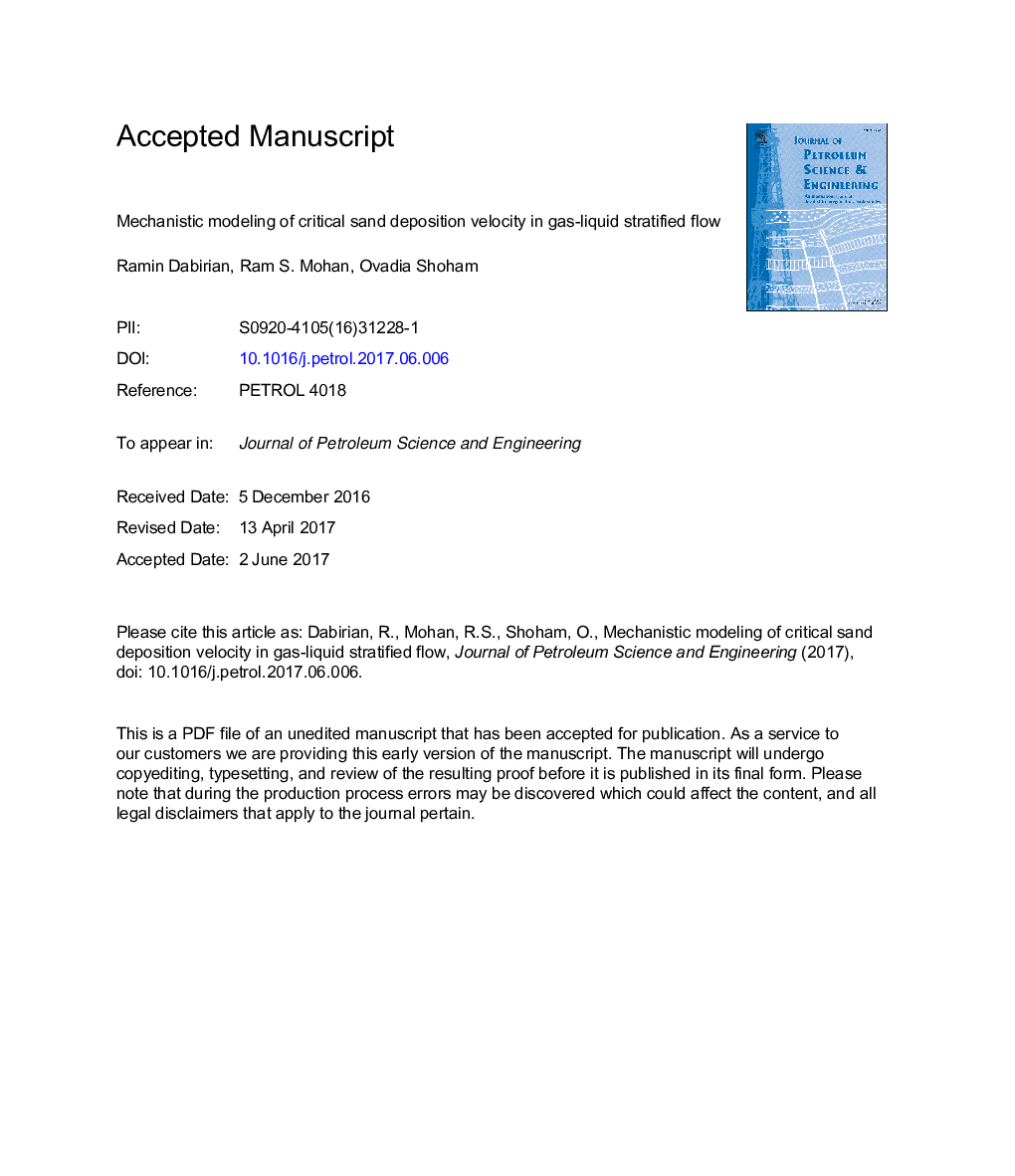| Article ID | Journal | Published Year | Pages | File Type |
|---|---|---|---|---|
| 5484146 | Journal of Petroleum Science and Engineering | 2017 | 40 Pages |
Abstract
Two models with similar approaches are developed based on the forces acting on a particle, such as the drag, turbulent, apparent gravity, van der Waals and lift forces for prediction of the transitions between moving/stationary dunes and moving/stationary bed. Dune pilling up and collapsing mechanism considering a torque balance on a rolling particle located at the top of the dune is adopted for stationary dunes. Torque balance applied to a rolling particle located on the lowest stratum of the moving bed layer is used to predict the minimum liquid film velocity for particle to grow a stationary bed. Comparison between the predictions of the two mechanistic models and the experimental data show good agreement, with critical sand deposition velocity absolute relative errors at 16.4% for stationary dunes and 12.6% for stationary bed.
Related Topics
Physical Sciences and Engineering
Earth and Planetary Sciences
Economic Geology
Authors
Ramin Dabirian, Ram S. Mohan, Ovadia Shoham,
